Samsung Galaxy Z Fold 4
It's been three years since the first Samsung Galaxy Fold stumbled out into the market. While the foldable device was exciting – even groundbreaking – it was also deeply flawed.
Samsung quickly found its feet with the Samsung Galaxy Z Fold 2, which introduced a larger screen on the outside and a bigger folding screen covered by non-peelable ultra-thin glass (early reviewers of the original Fold mistook the outer layer for a protective film and peeled it off, essentially destroying the device), and a re-engineered hinge that literally sweeps out debris to keep the complex mechanism working smoothly.
Last year's Samsung Galaxy Z Fold 3 further enhanced the hinge, upgraded materials to enhance durability, and adopted the Galaxy S21's phone setup.
The Galaxy Z Fold 4 offers mostly subtle but crucial refinements of the design, folding and cover screens, cameras and, yes, that now iconic hinge. The result is a Galaxy device that's looking more and more like any other flagship smartphone, but one with a very powerful, fun, and productivity-enhancing hidden surprise.
We've held almost every Galaxy Fold and Z Fold, and none feels as much like a 'normal' phone as this one. Obviously, the screen is still somewhat narrower than, say, the one on a 6.8-inch Samsung Galaxy S22 Ultra, and the overall device is, when folded, thicker than almost any standard smartphone on the market. However, Samsung has managed to cut down the external screen bezels and the hinge profile to expand the display by 2.7mm. Essentially, the external screen is a no-compromises, adaptive 120Hz smartphone display.
On the back is the full-boat S22-class camera array. It's a little disappointing that a Samsung smartphone at this price doesn't have the Samsung Galaxy S22 Ultra camera package, which brings 10x optical zoom and 100x Space zoom, but these quite-good lenses will satisfy most people.
The tablet-sized 7.6-inch foldable display is attractive, useful… and still has a noticeable crease. You simply can't bend a display without having that little dip down the middle that you can see and feel, but, as with the last couple of Z Fold editions, the crease quickly fades into the background when you're using the screen.
Recall the early Fold and its weird, irregular bezel that looked like it was struggling to hold the flexible screen in place. The Galaxy Z Fold 4, by contrast, offers few visual hints (aside from the crease) that this is not just a typical tablet display. Samsung has even hidden the selfie camera under the display – when you turn on the camera and flip the view, the lens aperture suddenly appears with a little flourish of white LED light around it (so that you know where to look).
You'll pay more for the Samsung Galaxy Z Fold 4 because it's easily the most versatile mobile device on the market right now. It's thin and light enough (it's lost 0.8 grams), and with a large enough outside screen, to look, feel, and work like a traditional flagship, while its ability to gracefully unfold into an expansive and brilliant 7.6-inch tablet with excellent multitasking capabilities and S Pen (not included) input make it something else entirely.
We have yet to see a lot of these Folds out in the wild, but I suspect this will be the iteration that changes that.
Samsung Galaxy Z Fold 4 release date and price
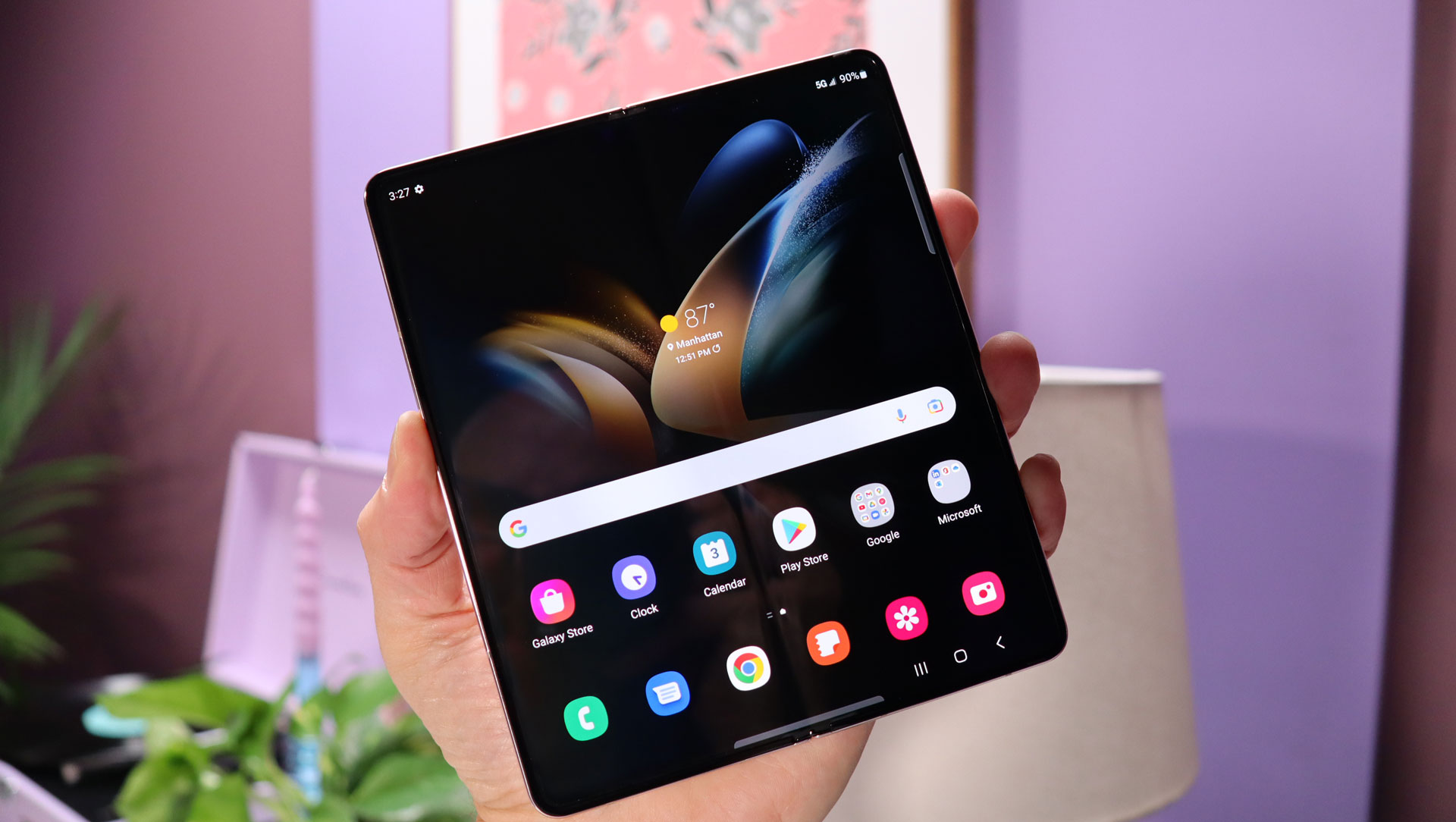
Samsung unveiled its latest foldables on August 10 during its Unpacked event, announcing both the Samsung Galaxy Z Fold 4 and the Samsung Galaxy Z Flip 4, along with the Galaxy Watch 5, Watch 5 Pro and Samsung Galaxy Buds 2 Pro.
The Fold 4 comes in three configurations and pricing options:
- 12GB RAM / 256GB: $1,799 / £1,649 / AU$2,499
- 12GB RAM / 512GB: $1,919.99 / £1,769 / AU$2,69
- 12GB RAM / 1TB: $2,159.99 / £2,019 / AU$2,999
There are also three Galaxy Z Fold 4 color options: Gray, Phantom Black, and Beige (sorry, no Bora Purple). The phone goes on sale on August 26.

Samsung Galaxy Z Fold 4 design and display
Design-wise, the changes between the Z Fold 3 and the Samsung Galaxy Z Fold 4 are almost so small as to be missed. However, whilewe haven't had a lot of time with the new handset, in the hand it gives a distinct impression that the new Fold 4 feels more… 'phone-like'.
What we mean is that the slightly larger cover screen, thinner body (0.1 mm thinner), and less prominent hinge all combine to nudge the Samsung Galaxy Z Fold 4 closer to regular smartphone territory. There's a fingerprint sensor along one edge, although we didn't get to try it because Samsung didn't want us adding passcodes to the sample devices. Like its predecessor the phone has an IPX8 rating, which means it can handle a 30-minute dip in 1.5 meters of water.
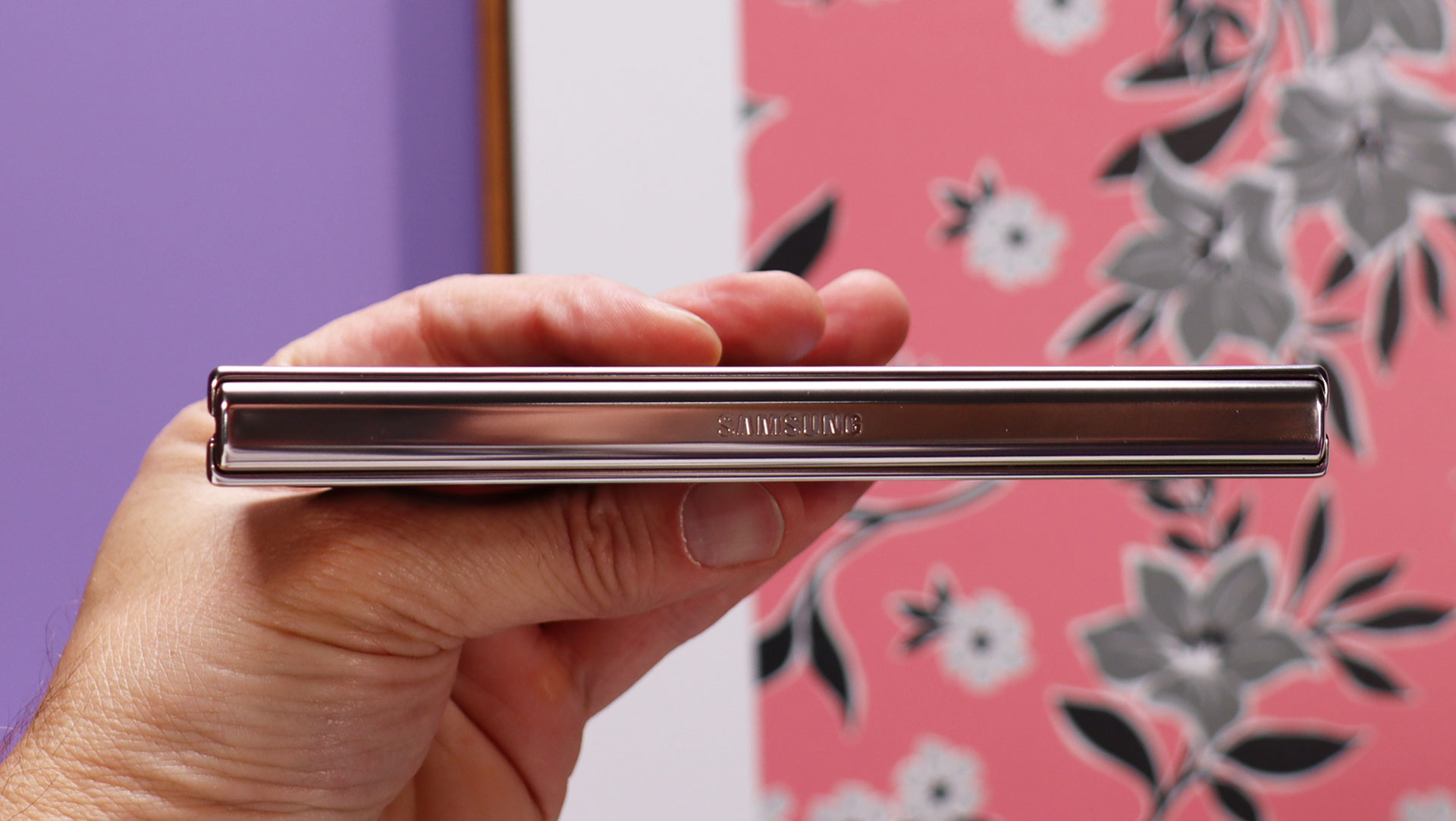
Its dimensions (67.1mm x 155.1mm x 15.8mm) are virtually the same as those of the last Fold, with just tiny bits shaved off here and there (the hinge is less prominent when viewed from the cover-screen side), all of which adds up to a device that's now just shy of a gram lighter (263g, down from the Z Fold 3's 271g)). It's weird how noticeable that is, though.
Of course, when we talk about the display, we really mean displays, and there are changes to both the cover screen and the big folding one on the inside.
On one side of the Samsung Galaxy Z Fold 4 is a gorgeous 6.2-inch Super AMOLED, edge-to-edge, adaptive-refresh (48-120Hz) display, with the bezel of the previous device trimmed away to give you a 2.7mm-wider view. That tiny bit of extra space makes the cover screen more usable, and gives the phone a more traditional look (the original Folds looked a little narrow when folded).
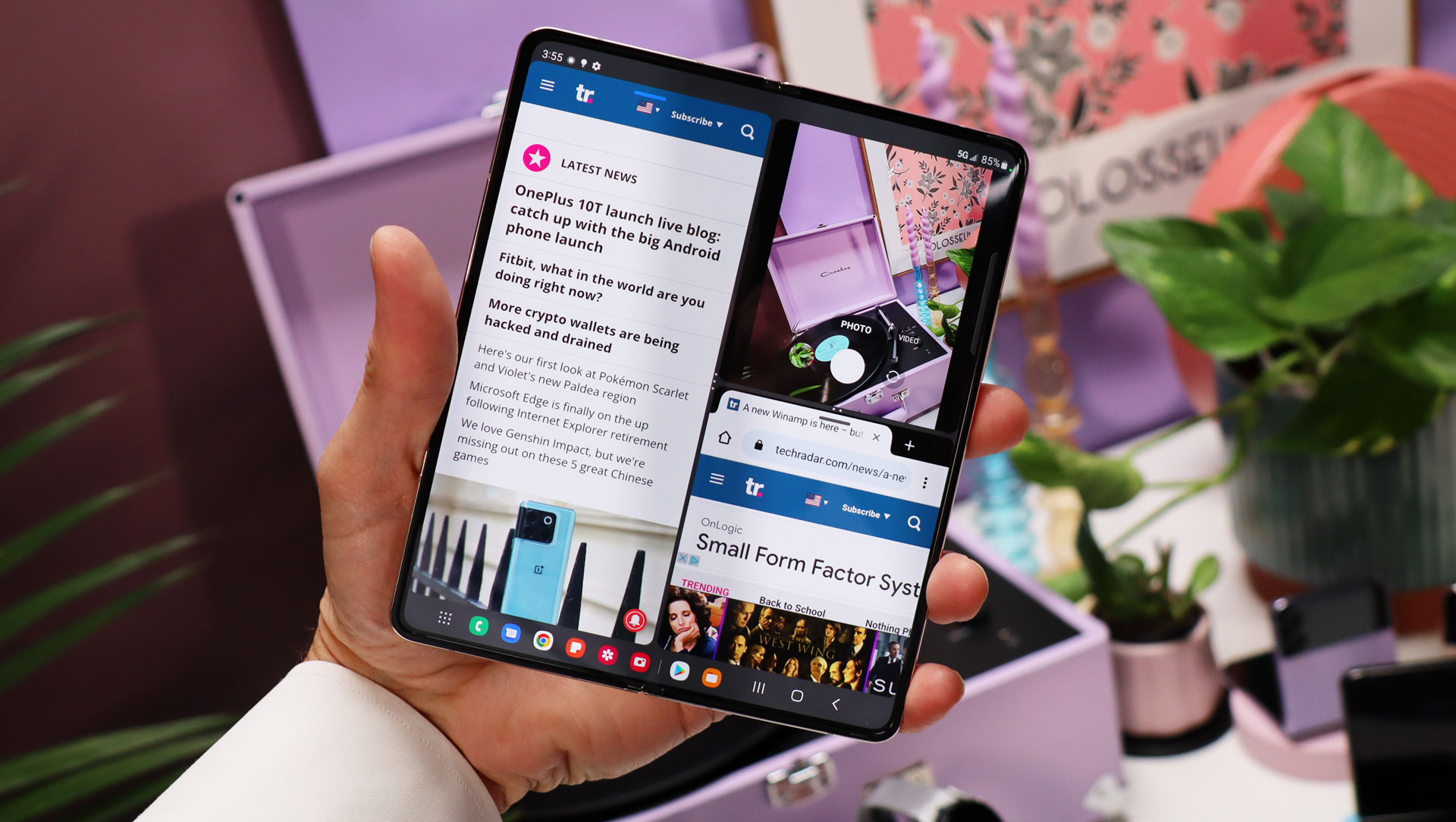
Obviously, the star of the display show is the 7.6-inch, 2176 x 1812 (the Fold 3 was 2208 x 1768), adaptive refresh rate (1-120Hz) display that greets you when you unfold the Galaxy Z Fold 4.
Unfolded, the device measures 130.1mm x 155.1mm x 6.3mm, which is ever-so-slightly thinner than the Z Fold 3. The movement of the hinge is as smooth as ever – Samsung told me the custom-made sweeping technology is still inside the hinge, but everything's been shrunk down to fit in the slightly more svelte hinge housing.
As on the Galaxy Z Fold 3, this screen is unblemished – even the selfie camera is hidden under the screen, and only appears (with a little LED light flourish) when you enable selfie camera mode.
Samsung says the display panel has been updated with stronger ultra-thin, bendable glass. Aside from the crease, which we could feel and see, the display is big, inviting, and useful. There was no opportunity to install apps, or try out videos and games, but we did browse the web, and even use an S Pen on it (the S Pen is still not supported on the cover screen).
It's lovely, responsive, and feels like a full-blown and quite-thin tablet.
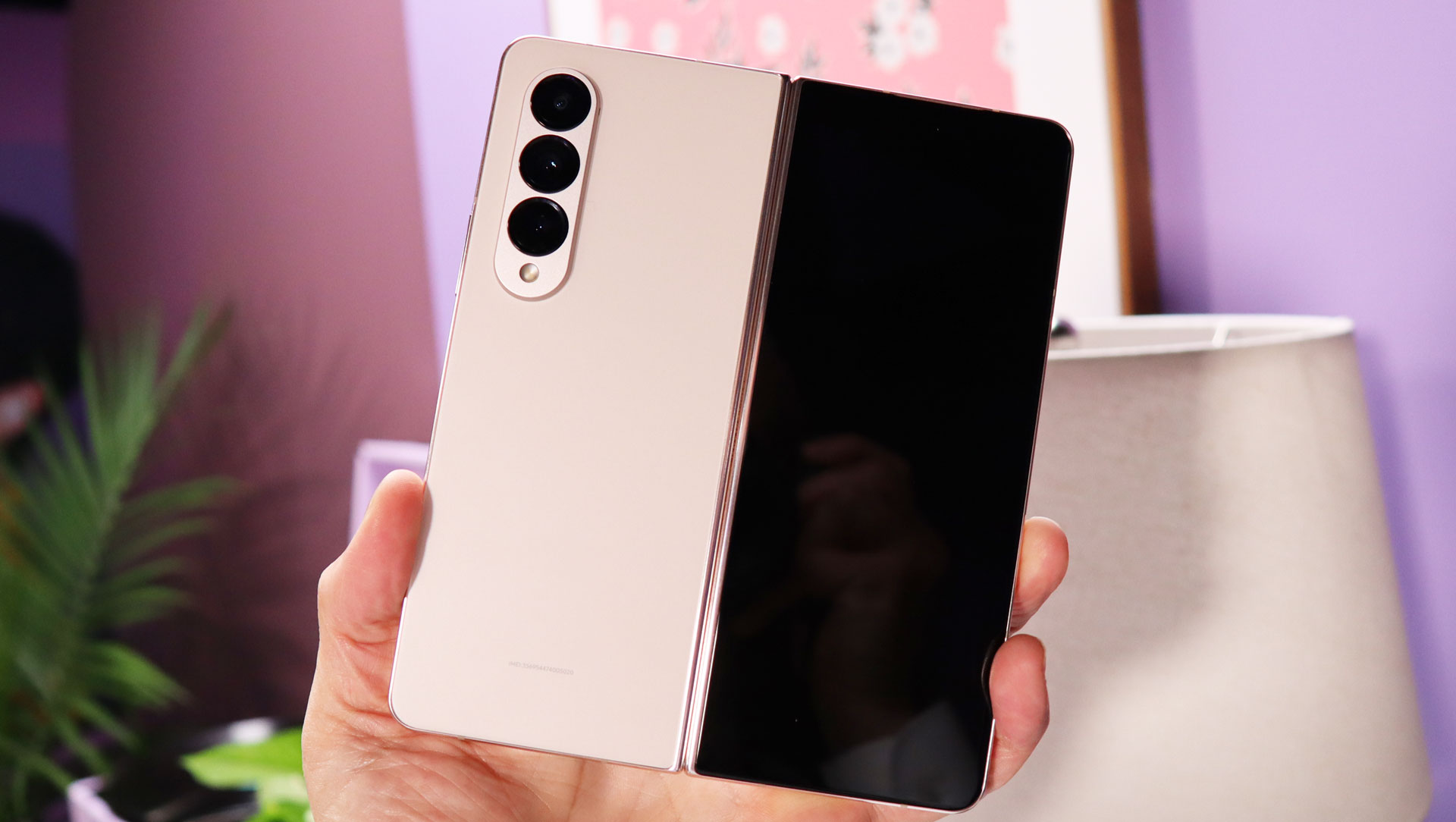
Samsung Galaxy Z Fold 4 cameras and battery life
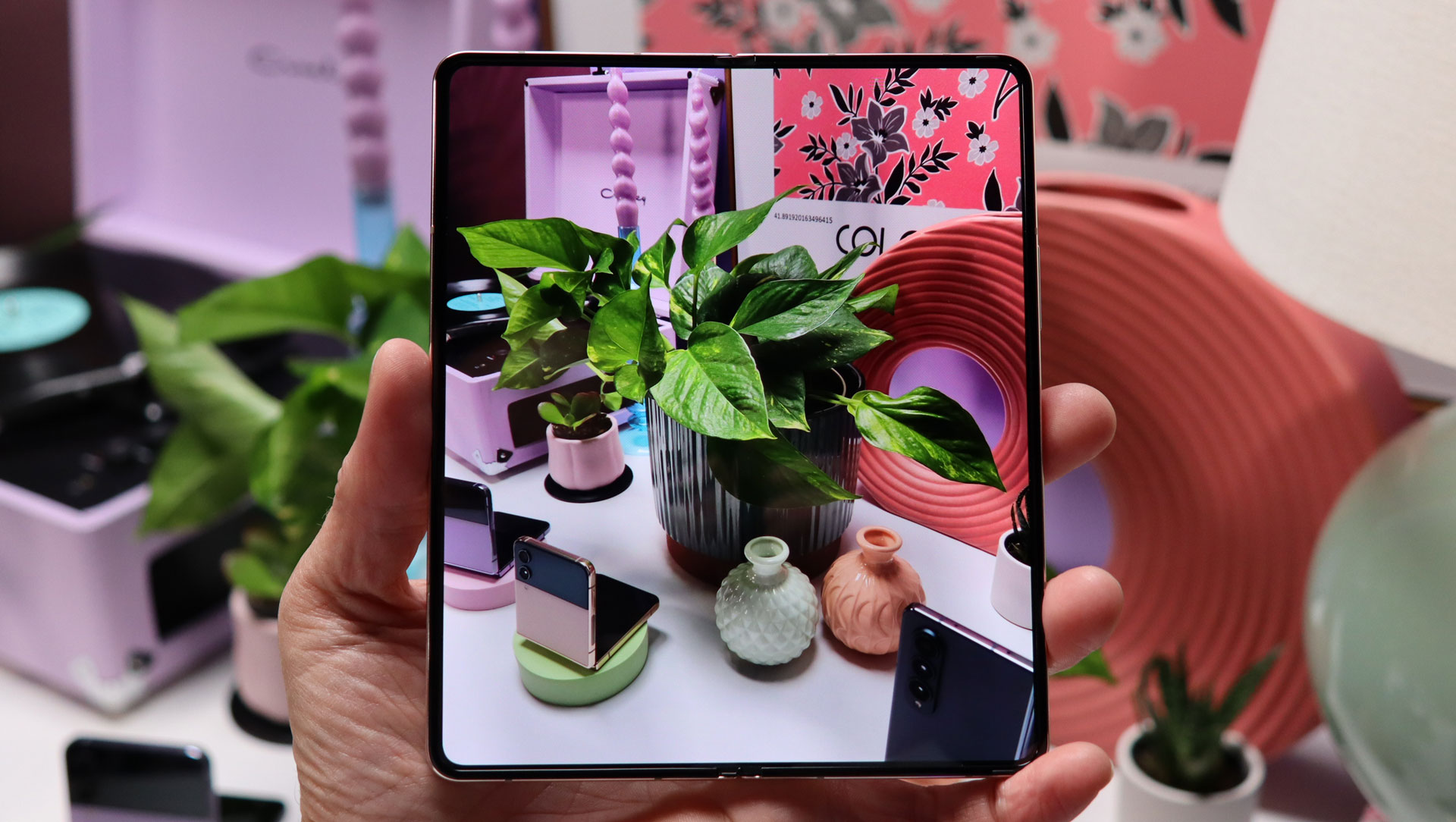
The TL;DR edition of this section is: if you know the Samsung Galaxy S22 camera array, you know the Z Fold 4's array. It's the same combination of 50MP wide, 12MP ultrawide, and 10MP, 3x optical zoom cameras. This is a fairly significant upgrade from the trio of 12MP sensors on the Fold 3, and compared to that phone, Samsung claims this one can produce 23% brighter pictures thanks to the larger main sensor.
We did our best to walk through all the lenses – those on the outside (rear cover), the 10MP selfie camera on the cover display, and the hidden, 4MP selfie camera underneath the main display, and all of them did a decent job in fairly controlled conditions.
Portrait mode from the main display camera was particularly impressive, while shots from the 3X optical zoom 10MP camera looked good. As on the Galaxy S22, the digitally-enhanced SpaceZoom tops out at 30x, but we couldn't get much of a sense of its effectiveness in the relatively confined demo space.
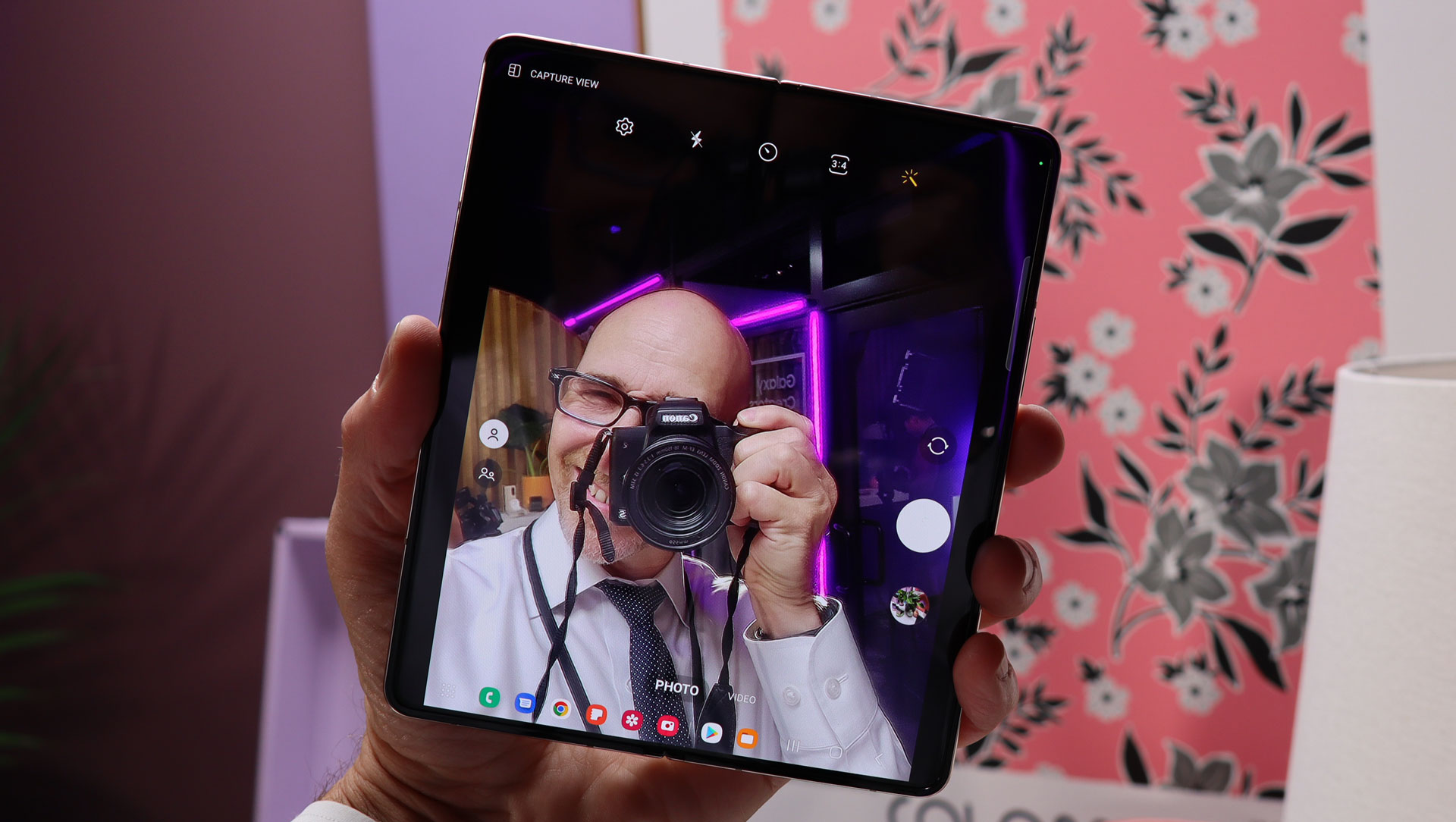
At 4,400mAh, the battery size is unchanged from the Galaxy Z Fold 3, and as such we expect users to enjoy a full day of varied activity, depending on what they're doing with the device. We'll have a better idea of battery performance when we put this phone through our full review process.
The phone supports fast wireless charging, with Samsung promising 50% in 30 minutes. You can also use the phone, via wireless power share, to charge other compatible devices.
Samsung Galaxy Z Fold 4 performance and specs
Inside the Samsung Galaxy Z Fold 4 is Qualcomm's latest Snapdragon 8 Plus Gen 1 CPU backed by a formidable 12GB of RAM, which means you can expect zippy performance across a wide range of tasks. This is especially important because, with that big screen, you'll be doing things on the Fold 4 you wouldn't necessarily attempt on a smaller-screen device.
One of the Z Fold 4's marquee features is its ability to multitask. We had time to try the new app dock, which sits at the bottom of the screen and lets me hold down on an app icon, feel a little haptic vibration, and then drag and drop an app instance to the left, right, bottom, or top of the screen. We were able to open up to three app windows (including two instances of the same app).
We don't have any benchmark numbers for you yet, but its maker says the 8 Plus Gen 1 outperforming its Snapdragon 8 Gen 1 predecessor by 10%, with a 30% power-efficiency gain – which could mean good things for battery life.
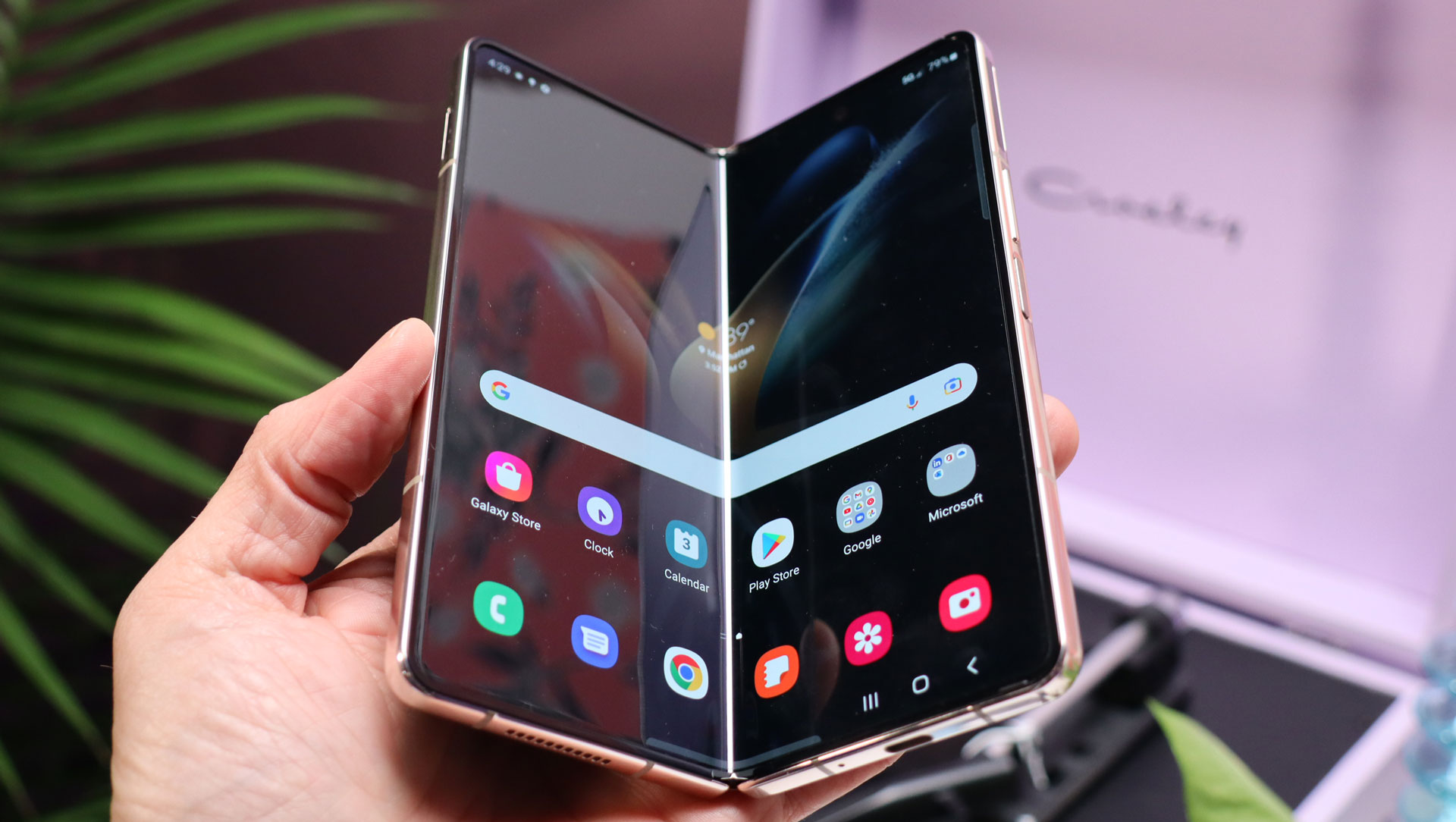
A folding screen promises versatility and, just based on a brief hands-on, the Samsung Galaxy Z fold 4 appears ready to deliver it in spades.
As mentioned, multitasking is easy. We also found that we could use the phone like a tiny laptop. Putting the phone into flex mode and opening the browser, I could tap the address window and a split keyboard would appear on the horizontal portion of the flexible screen. The more apps that use this mode, the better.
Drawing on the tablet with the S Pen was fun, and, more importantly, fluid.
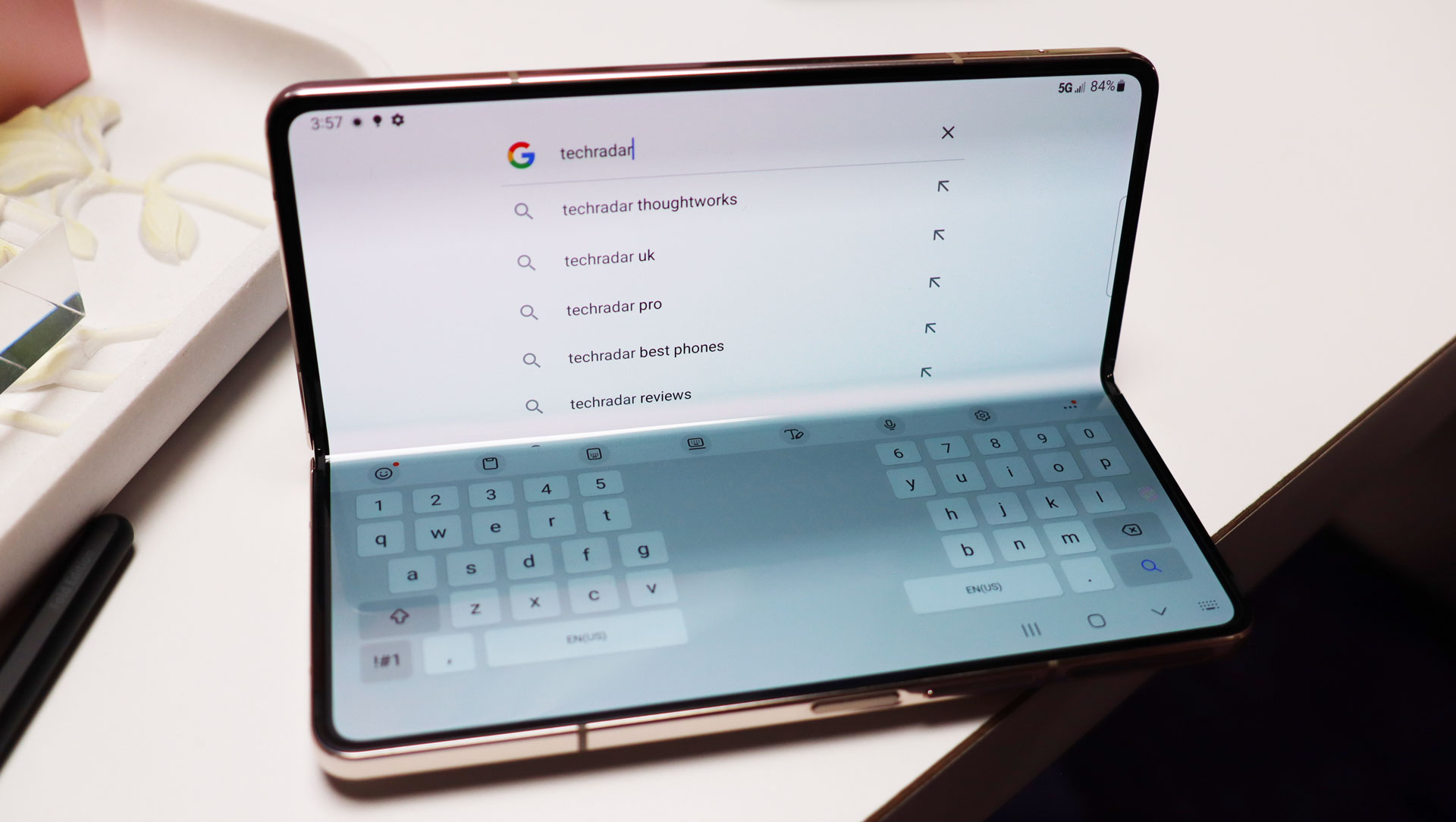
Early verdict
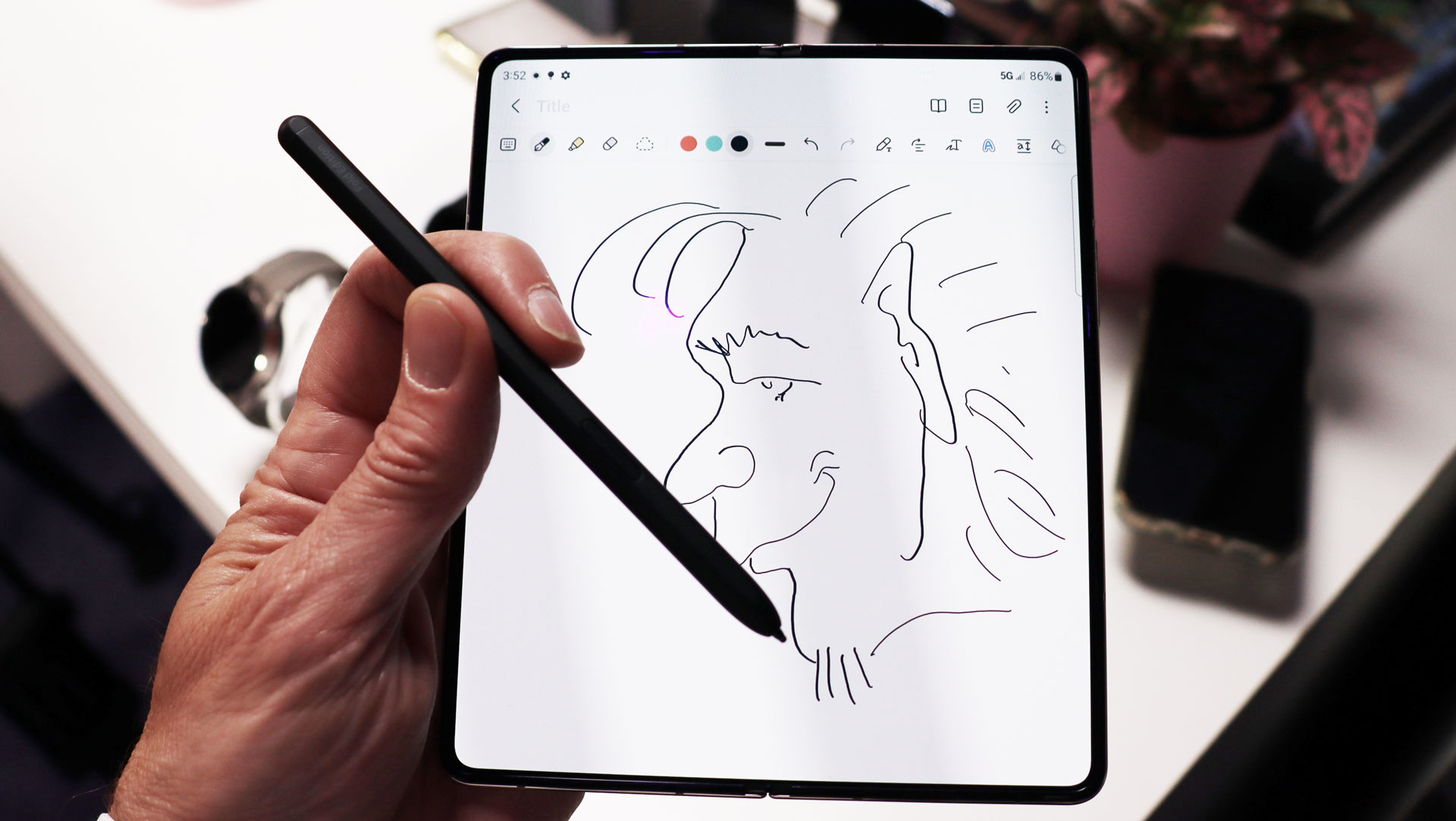
The Samsung Galaxy Z Fold 4 is no longer a flexible oddity. It's a powerful Android smartphone that now looks almost like a typical flagship when folded, and which opens into a useful, fun, and potentially productive tablet.
The cameras are not the best Samsung has to offer, but they should be very good, based on our experience with the Galaxy S22, and will satisfy most people. We're excited about the performance potential, multitasking, and watching movies on the 7.6-inch display, and really don't mind the crease; yes, you can feel it and see it, but mostly you can forget it's there.
At $1,799 for the 256GB model, this is one of the most expensive smartphones on the market; though to be fair, few phones offer two, basically full-sized 120Hz Super AMOLED displays of two different sizes on one device. And Samsung offers a variety of pre-order and trade-in deals, which means it takes some effort to pay the full price.
We're not ready to say, "Buy this phone." We need to benchmark it, carry it around for a bit, and live with it. Then we'll know.
0 comments:
Post a Comment